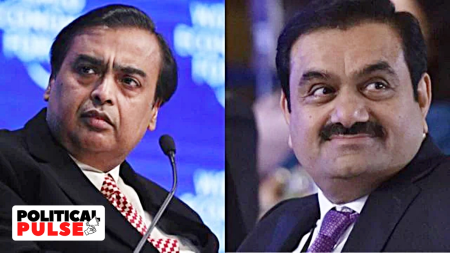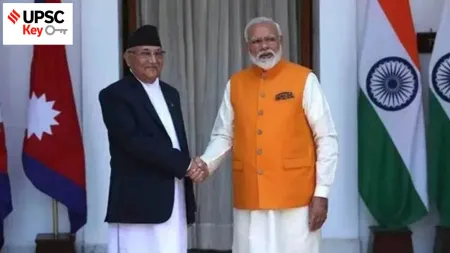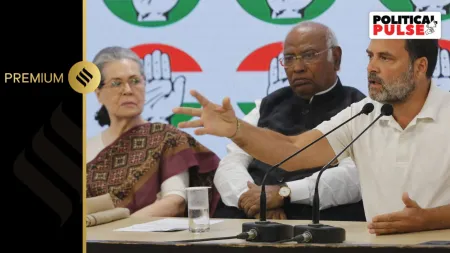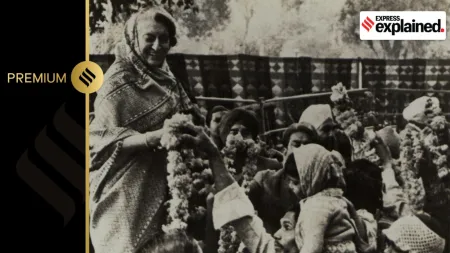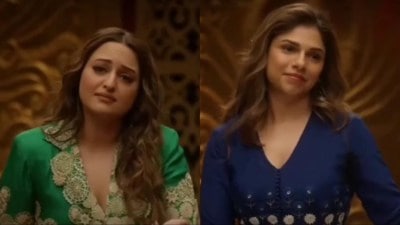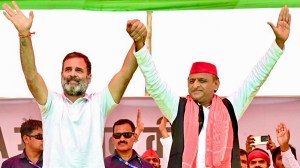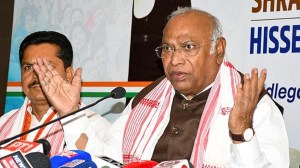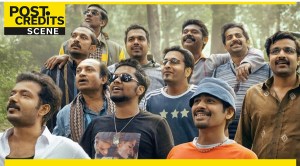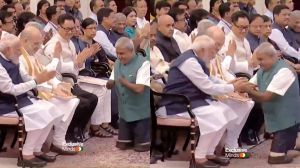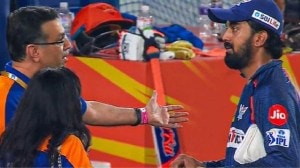- India
- International
After over half a century, Birla Planetarium ready for change
S Dutta, Curator of the planetarium, explained that the series of new projectors will give the audience a feeling of being completely submerged in the astronomical atmosphere.
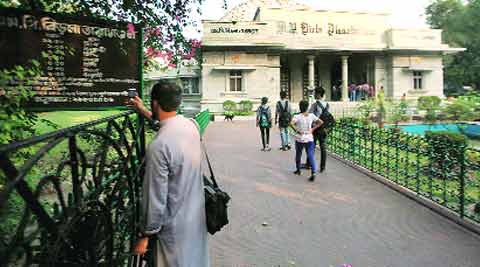 MP Birla Planetarium building in Kolkata. (Source: Express photo by Subham Dutta)
MP Birla Planetarium building in Kolkata. (Source: Express photo by Subham Dutta)
52-year old M P Birla Planetarium in Kolkata, Asia’s largest and the world’s second-largest planetarium, is all set to get a major facelift. The now antiquated optomechanical projector that this planetarium has been using for over half a century — ever since it first began holding public shows on September 29, 1962 — will soon make way for digital projectors that will allow the consolidation of many individual projection sources into a single, full-dome video-based display.
“Keeping in pace with time, we plan to change over to a more sophisticated equipment and give viewers a never-before experience here,” said Prof Ramanathan Subramanian, director general, who has been heading this planetarium since its inception.
S Dutta, Curator of the planetarium, explained that the series of new projectors will give the audience a feeling of being completely submerged in the astronomical atmosphere. Dutta said the revamp would cost around Rs 25 crore and would take about a year to complete. The order (for the digital projector), he says, has been placed with Germany-based Carl Zeiss AG.
The planetarium’s upcoming date with changing technology has, at the same time, put a certain spotlight on its group of lecturers, who have been narrating the various astronomy-related facts in 30-minute-long shows (reduced from 45 minutes held initially) to their ever-changing audience all these years.
One such lecturer, 87-year-old Shanti Bose, who still finds in her work “a charm” after delivering the near exact treatise for the past 51 years, is not sure about what the management will do with the likes of her once the planetarium goes digital.

“The programmes will be recorded now,” she says.”I don’t know what the management would do with us. Whether they will train us to operate those machines or ask us to leave, I don’t know; it all depends on them,” Bose says.
She adds: “The charm of a live lecture will definitely be lost. It will be more mechanical. (But) I am quite aged and prepared for all sorts of changes.”
Bose also holds a strong view on the audience that visits the planetarium now.
“The two major prerequisites of a planetarium are — pin drop silence and pitch darkness. With the mobile phones coming into picture, both these factors have been hampered. Sometimes I have to ask them in the middle of a lecture to switch off their cell phones. Notices, instructions don’t work. The shadow of someone’s head on the dome spoils the show,” she says.
Besides the over five lakh people (data from last year’s record) who come here to witness the celestial treat, the planetarium also runs a free evening course and a post-graduate diploma course in astronomy — the country’s only planetarium that does so. And it is here where Bose and other lecturers may still have a role to play.
“The two courses are taught by our own people while some external faculty are invited from time to time. The evening course, held once a week and lasting 40 lectures, is always overbooked. More than 80 enrol. For the post-graduate course, which lasts for 10 months, 20-25 students enrol. There is always a seat constraint and a waiting list has to be drawn,” Dutta said.
May 10: Latest News
- 01
- 02
- 03
- 04
- 05


